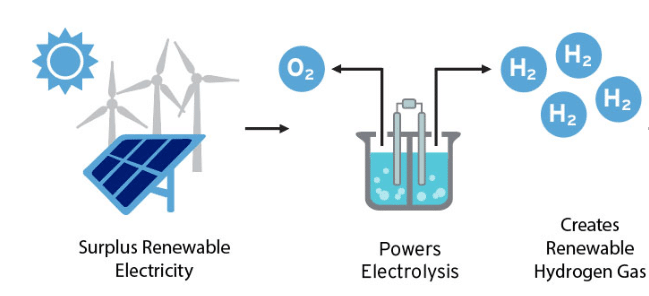
Quick take on Hydrogen as a future fuel (or a storage medium)
The video above provides a quick brief on the current situation on Hydrogen as a fuel of the future.

Hydrogen is present in the following modules that appear naturally – CH4 (natural gas), H2O (Water) or C137H97O9NS (coal).
As one can see from the above, for every hydrogen atom generated using natural gas, 0.25C atom of while coal produces almost 1.5C atoms along with other atoms. However, Water produces 0.5O – which is not hazardous to environment.
Therefore, gray, brown and blue hydrogen are all bad for the environment.
The only way that we can produce and use hydrogen sustainably is by using water.
Electricity from various renewable energy sources is used to undertake the splitting process and the resulting hydrogen is called Green Hydrogen, a truly environmentally friendly hydrogen.

Costs Consideration
The current cost of producing 1kg of Green Hydrogen is $5/Kg while Gray or Blue hydrogen costs about $1.8 / Kg. However, this is is slated to drop significantly over the next few years and it is estimated by various equipment manufacturers and project developers that the cost will reach parity in 2025 and drop down to $1 / Kg in 2030.
Efficiency Consideration
The second most important factor is the round trip efficiency. Remember, hydrogen is not a fuel in itself but a energy carrier – a medium to transfer energy from point A to point B or time A to time B (space-time… wow!).
Batteries (traditional lead acid or contemporary lithium types) can deliver about 80% of the original energy that goes in. (20% is the losses, converting electricity into chemical and then back to electrical energy). Hydrogen storage has round-trip efficiency of about 40%, meaning almost 60% of the energy that goes in is lost. A lot needs to be done to improve this gap.
Practical Consideration
Diesel as a fuel has 3 times energy density per Kg and almost 6 times energy density per Liter (350bar) as compared to hydrogen. However, when a complete power train (engine, motor) is consider, Diesel engine is significantly heavier than hydrogen fuel cells. This makes the complete storage + Power train system almost similar in weight per distance travelled.
This changes dramatically when the hydrogen is compressed to 700 bar – which doubles energy density of hydrogen by volume. However, storage of such high pressure requires sophisticated equipments and are currently available only in heavy engines in trucks and trains – where the adaptability of hydrogen is quickest.
